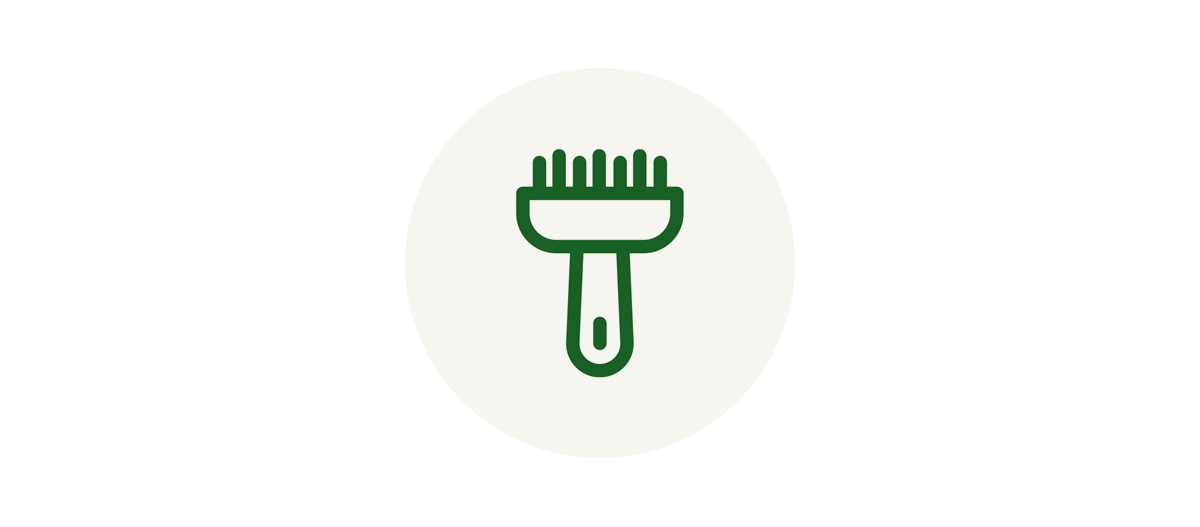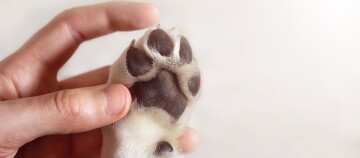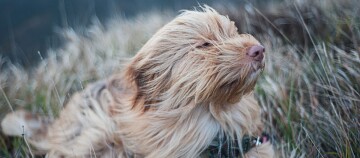Different Dog Coat Types - from a Slight to Strong Curl to Bushy Short Coats
07.10.2022 - Reading time: 4 minutes

Wolf species display different hair types with ultra-short to very long topcoat and with zero to abundant undercoats. Through natural selection and selective breeding, we have developed many more different coat types in our dogs.
The coat
With the exception of very few breeds, the entire body of the dog is covered with fur. Only the tip of the nose and the paw pads are hairless. The hairs grow in tufts from clusters that are invisible to us. Nerve cells in the skin and nerve fibres in the outermost layer of hair transmit signals that the hair picks up, and tiny muscles make sure that the hair bristles or clings. Each main hair is associated with two to three secondary hairs. The hair root lies under the skin. Sebaceous glands supply each individual hair with oils and minerals. In addition, sebum helps to protect the dog from heavy humidity, which is particularly pronounced in breeds such as the labrador. As a result, healthy hair is shiny and supple. Hair is also referred to as a reflection of health, because its condition often indicates whether the dog is physically and mentally robust. Incidentally, the ingredients of spot-ons are also distributed via the skin’s oily layer, which then protect it from flea and tick bites.
In dogs, we distinguish between topcoat and undercoat. Although each individual hair is as light as a feather, the amount of hair makes a difference: For short-haired dogs that have no undercoat, we reckon on four grams of hair per kilo of body weight; for long-haired dogs with a dense undercoat, we reckon on 35 grams of hair per kilo of body weight. Therefore, a whippet weighing ten kilos has a coat weighing just 40 grams on its body, while a golden retriever weighing 35 kilos is carrying around one kilo of fur.
The topcoat
Topcoats are also called guard hair. These are thicker than undercoats and do not grow as densely. The original structure of the topcoat, which can still be seen in the Nordic wolf, is the dense waterproof coat. Through breeding and natural selection, other hair types have developed – short hair, long hair, curly hair and rough hair. The hair structure of a dog is genetically determined. As a result, there are also a number of mixed forms such as strongly curled or slightly wavy hair, or wire hair.
The topcoat cycle
The length that the hair grows is genetically determined. Normally, a single hair’s life cycle lasts between six and eight weeks, then a new hair root forms and the old hair dies and falls out. The exception to this is some curly dogs, most notably the poodle. Most poodle hairs remain in the growth phase. The poodle therefore hardly sheds at all, so its coat has to be clipped. Otherwise, the increasingly longer hairs can mat into thick strands, as is the case with some other curly breeds, for example the Komondor (Hungarian sheepdog).
Guard or topcoat hairs are thicker and harder than the “woolly” hairs that make up the undercoat. In other dogs, such as many terrier breeds, not all the dead hairs fall out, but remain stuck and have to be plucked out (trimmed). Incidentally, between 400 and 1200 guard hairs grow on every square centimetre of skin, depending on the breed. The growth rate of the individual hairs is coordinated in such a way that a healthy dog will never have any areas without hair. This is why severe hair loss is always a sign of a disorder. Even during the moult, a dog does not lose the topcoat in clumps, but hair by hair. The undercoat, which is strongly influenced by the length of daylight, thins out in the spring and thickens in the autumn; this is when the coat changes. More information about moulting and shedding can be found here.
The function of the topcoat
The topcoat primarily determines the colour of the dog’s coat, because it is supplied with pigments. The guard hair, depending on its density and length, protects against soaking because it drains away rain and water. It also prevents thorns, brushwood and other sharp objects from penetrating the skin. It also reduces the risk of injury in dog fights and attacks by other animals. Something that is often forgotten is that guard hair not only keeps the body warm like a coat, it also keeps sunlight and heat at bay.



